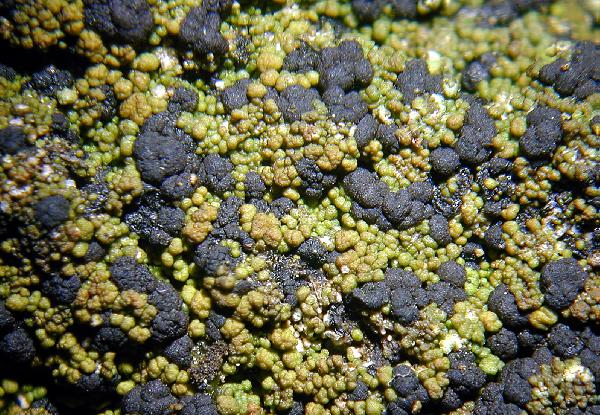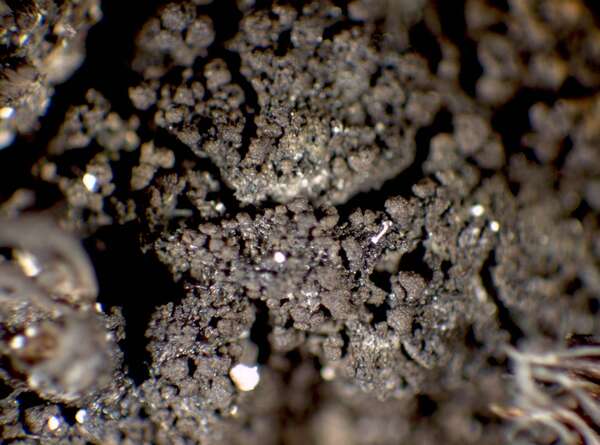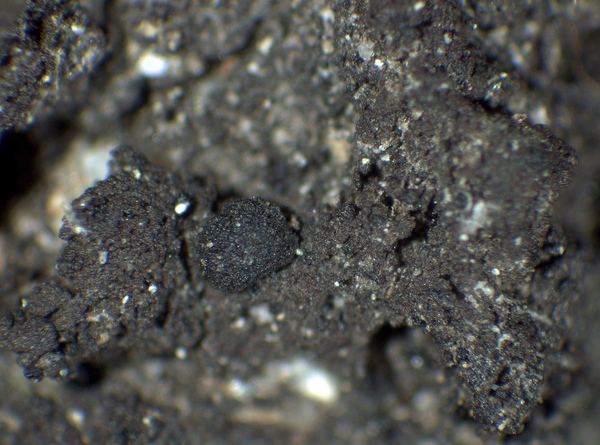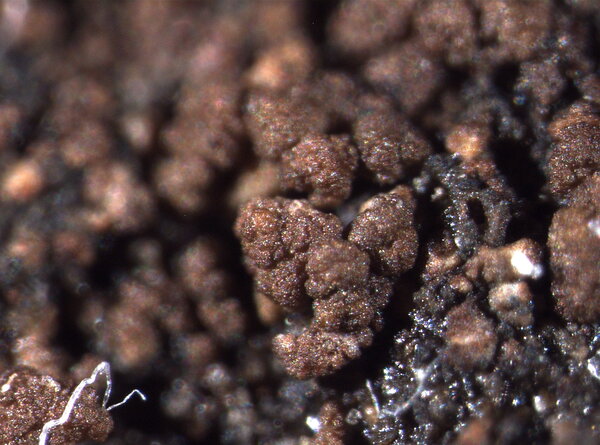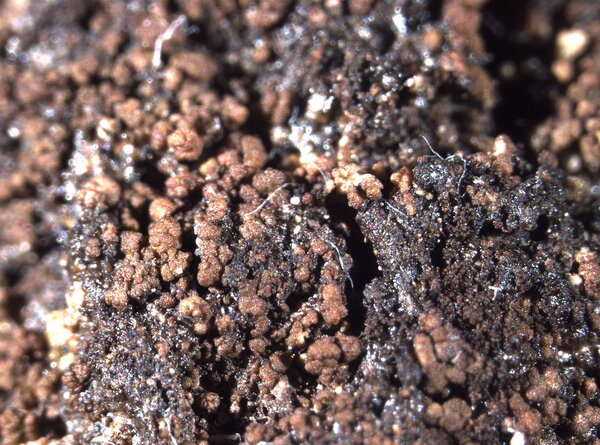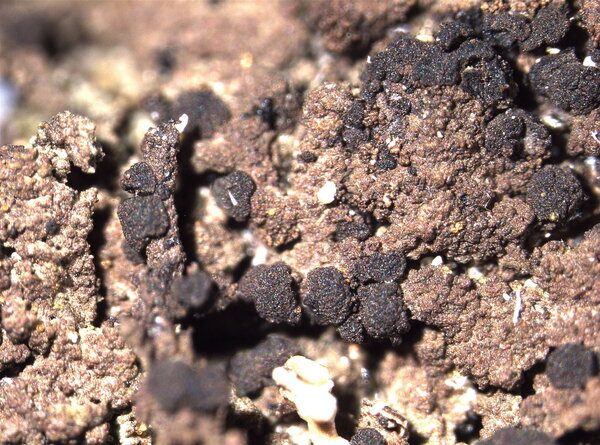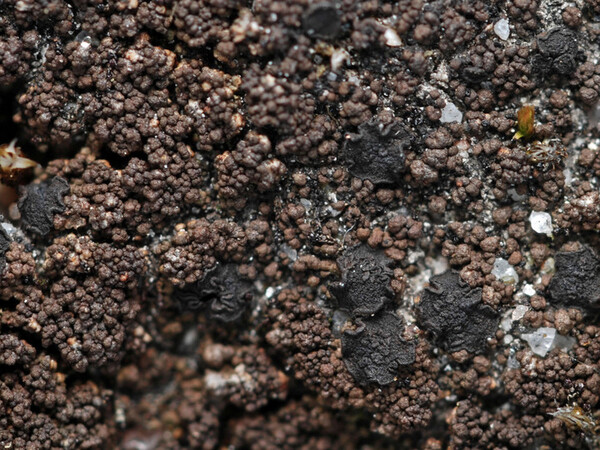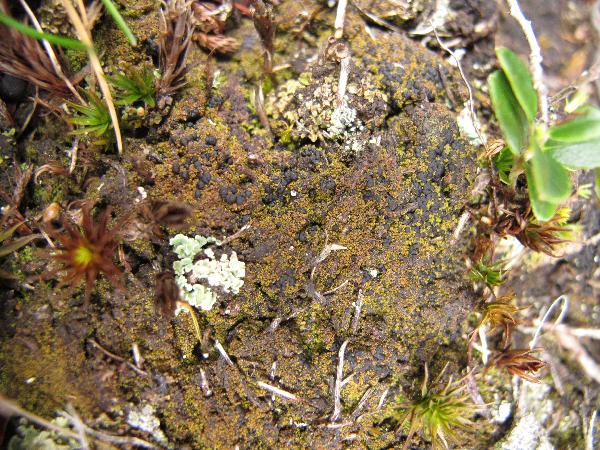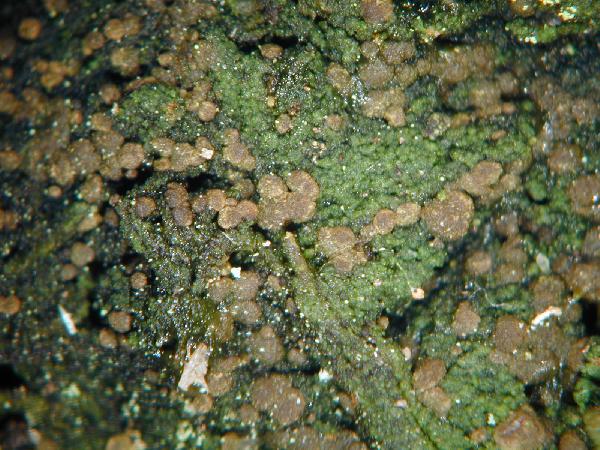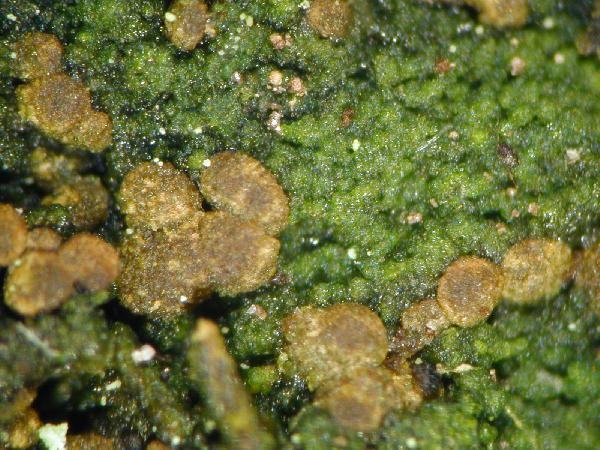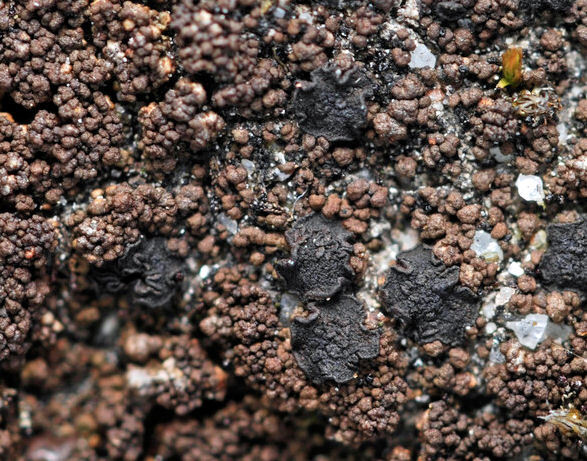Placynthiella oligotropha (J.R. Laundon) Coppins & P. James
Lichenologist, 16: 245, 1984. Basionym: Lecidea oligotropha J.R. Laundon - Lichenologist, 1: 164, 1960.
Synonyms: Lecidea uliginosa sensu Vain. et auct. non (Schrad.) Ach.; Lecidea uliginosa var. verruculosa Hedl.; Saccomorpha oligotropha (J.R. Laundon) Clauzade & Cl. Roux
Distribution: N - Frl (Tretiach & Hafellner 2000), Ven (Thor & Nascimbene 2007), TAA (Nascimbene 2003, 2004, 2008b, Nascimbene & al. 2008c, 2022, Nimis & al. 2015), Lomb (Nascimbene 2006), Piem (TSB 33872). C - Tosc (Benesperi & al. 2007).
Description: Thallus crustose, episubstratic, dark olive- to red-brown, dull, turning yellowish green when wet, coarsely granular-verrucose, consisting of rounded, convex to subcoralloid, 0.1-0.3 mm wide, goniocyst-like granules. Apothecia biatorine, dark red-brown to brownish black, rounded, subsessile, often confluent, (0.2-)0.4-0.5(-0.8) mm across, with an initially concave to flat, finally sometimes convex, rugose disc, and a usually persistent proper margin. Proper exciple deep red-brown, brown or blackish brown, extending into the hypothecium, pseudoparenchymatous; epithecium brown, K-; hymenium colourless, pale yellow, or pale reddish brown, 55-70 µm high, I+ reddish orange; paraphyses much branched, 1-1.5 µm thick at base, the apical cells to 7 µm wide, often with a brown cap; hypothecium yellowish brown to brown-black in lower part, I+ reddish orange. Asci 8-spored, cylindrical-clavate, thin-walled, the apical dome mostly I-, Trapelia-type. Ascospores 1-celled (rarely 1-septate), hyaline, ellipsoid, (8-)10-14(-16) x 4.5-6(-7) µm. Pycnidia subglobose, brown-black. Conidia bacilliform. Photobiont chlorococcoid. Spot tests: thallus K-, C-, KC-, P-, UV-. Chemistry: without lichen substances. Note: a cool-temperate to boreal-montane, probably circumpolar lichen found on soil and turf, more rarely on weathering siliceous rocks, mostly in clearings of woodlands in upland areas.
Growth form: Crustose
Substrata: soil, terricolous mosses, and plant debris
Photobiont: green algae other than Trentepohlia
Reproductive strategy: mainly sexual
Commonnes-rarity: (info)
Alpine belt: very rare
Subalpine belt: rare
Oromediterranean belt: absent
Montane belt: very rare
Submediterranean belt: absent
Padanian area: absent
Humid submediterranean belt: absent
Humid mediterranean belt: absent
Dry mediterranean belt: absent
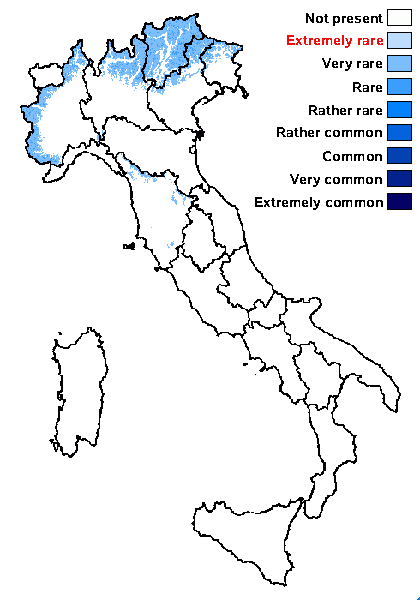
Predictive model
Herbarium samples
Growth form: Crustose
Substrata: soil, terricolous mosses, and plant debris
Photobiont: green algae other than Trentepohlia
Reproductive strategy: mainly sexual
Commonnes-rarity: (info)
Alpine belt: very rare
Subalpine belt: rare
Oromediterranean belt: absent
Montane belt: very rare
Submediterranean belt: absent
Padanian area: absent
Humid submediterranean belt: absent
Humid mediterranean belt: absent
Dry mediterranean belt: absent

Predictive model
| Herbarium samples |
 INDEX FUNGORUM
INDEX FUNGORUM
 GBIF
GBIF
 DOLICHENS
DOLICHENS
